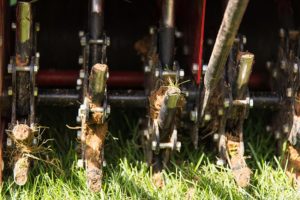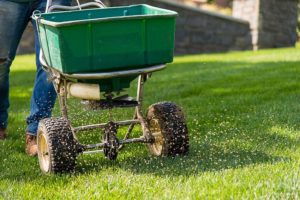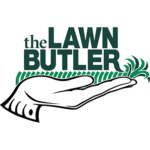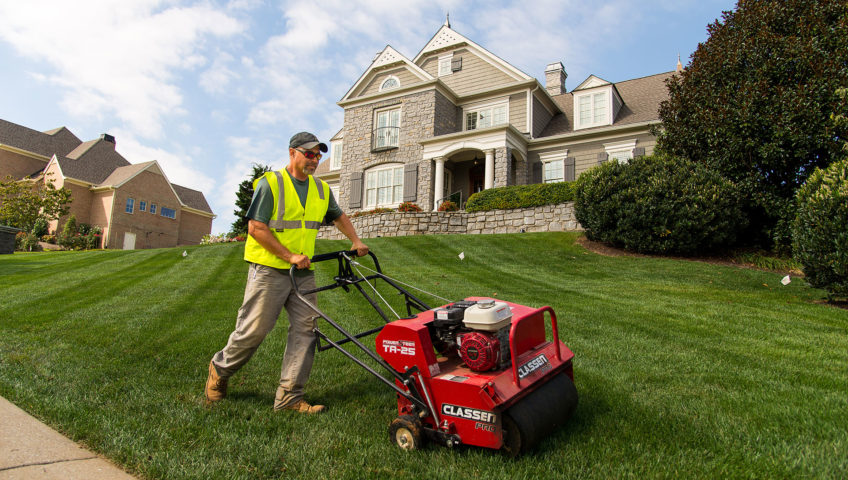Summer months here in Knoxville, Tennessee can be a challenging time to keep your lawn in top notch shape. With warmer temperatures and lower rainfall amounts, routine regiments and irrigation scheduling directly affect the health of your lawn. Simply adding a troubling problem like brown patch or grub infestation, your grass can look bare, burnt, and withered. The good news is that any damage that may have occurred throughout the summer can be repaired.
Aeration and Overseeding
When used in conjunction, aeration and overseeding is a powerful way to maintain your lawn or return it to its former glory. The cooler temperatures that come along with the fall season provide optimal conditions for seed germination and growth. Seeding and aeration take place in the fall to maximize your return on investment, making the timing of such crucial. If the weather is too hot, when seeding and aerating, then germination rates are stunted. If you wait too long to seed and aerate into late fall, then new root system growth may not be established enough to survive winter.
What is Core Aeration?
Core aeration is a process used to help reduce soil compaction and allow nutrients, air, and water easier access to the root system of the turf. There are two main types of aeration tools, which are the plug aerator and a spike aerator. The plug aerator is the tool Lawn Butler uses. The spike aerator can actually increase compaction in the area of the holes. A plug aerator pulls a small “plug” approximately ¾” in diameter, 3-4” deep and 4-6” apart from each other. Some lawns require passing over the yard two or three times if the existing turf is in poor condition. The removal of the “plug” has multiple purposes. With the “plug” section of turf removed from the ground, the resulting hole allows the surrounding area room to expand thus relieving compaction in the area. The “plug” hole also creates a safe area where seed cannot be washed or blown away when it lands inside, as well as a small microclimate inside the hole that helps with seed germination. Lastly, as the plug breaks down and composts, the minerals feedback into the ground creating nutrients for the soil beneath your turf.


Overseeding
After the aeration process allows the optimum chances for seed germination and root system health, it is time to select the appropriate seed. Different grasses grow better in different areas, so knowing your USDA Plant Hardiness Zone is a good first step. The majority of the time Lawn Butler will install a triple blend premium fescue mix that has been Oregon Blue tag certified. Beyond the fescue mix, there are specific seeds for sunny and shady areas and mixes containing different blends. Lawn Butler can help you determine the best seed for your lawn.
My lawn looks good. Do I still need to aerate and overseed?
Yes, even if your lawn looks to be healthy, we still recommend that you aerate and overseed. While the popular trend among homeowners is to aerate and overseed because of a thinning lawn, the true thought is to overseed to avoid a thinning lawn. As turfgrass matures it naturally thins out over time. The combination of having the established turf and a new season of young grass ensures that you have a more healthy, full, and lush looking yard all the time.


